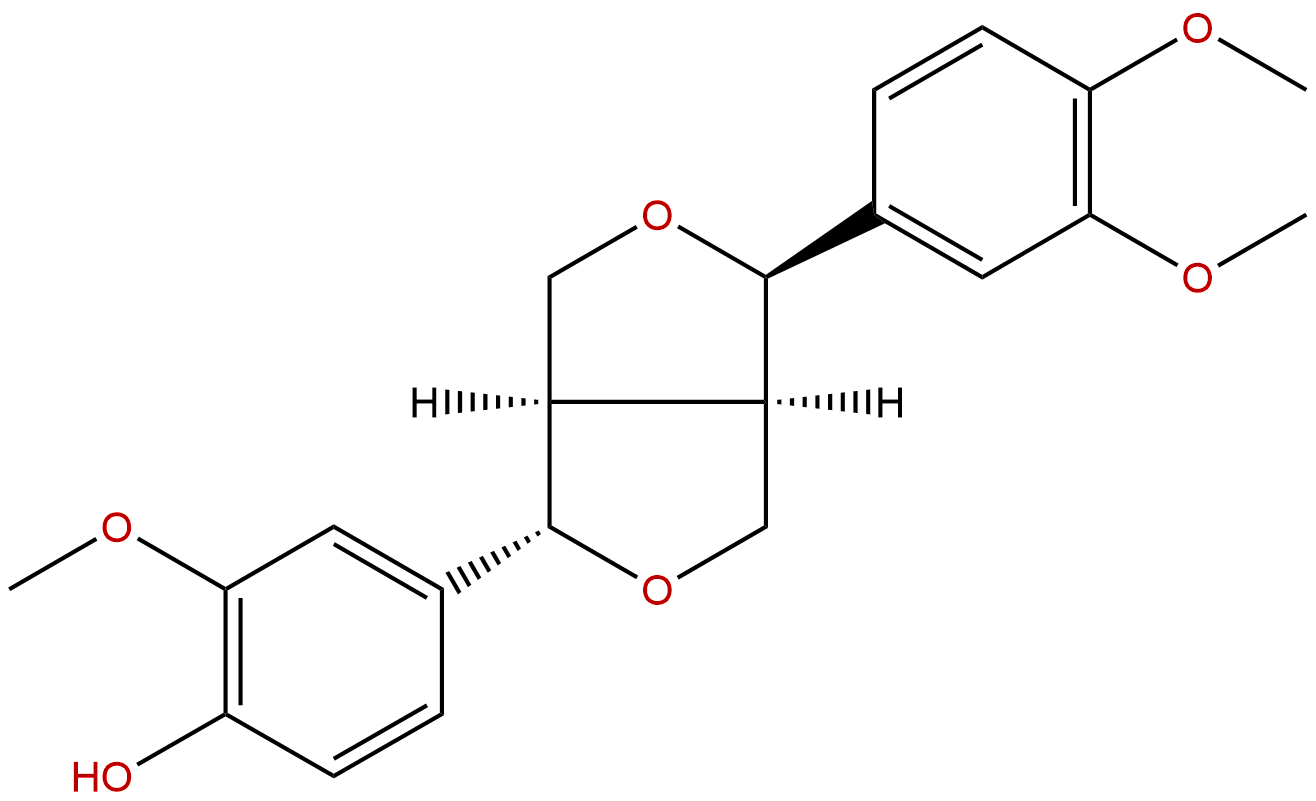
PhillygeninCAS No.:487-39-8
|
||||||||||
 |
|
|
||||||||

| Catalogue No.: | BP1086 |
| Formula: | C21H24O6 |
| Mol Weight: | 372.417 |
Synonym name: Phillygenol; Forsythinol
Catalogue No.: BP1086
Cas No.: 487-39-8
Formula: C21H24O6
Mol Weight: 372.417
Botanical Source: fruit of Forsythia suspensa. Also from Phillyrea spp., Lancea tibetica and Piper sylvaticum
Purity: 95%~99%
Analysis Method: HPLC-DAD or/and HPLC-ELSD
Identification Method: Mass, NMR
Packing: Brown vial or HDPE plastic bottle
Can be supplied from milligrams to grams.
For Reference Standard and R&D, Not for Human Use Directly.
Inquire for bulk scale.
Description:
Phillyrin, (+)-Phillygenin, and (-)-phillygenin exert the strongest inhibitory activities on NO production with IC(50) values.
References:
Spectrochim Acta A Mol Biomol Spectrosc. 2012 Jan;85(1):120-6.
Interaction between phillygenin and human serum albumin based on spectroscopic and molecular docking.
METHODS AND RESULTS:
In this paper, the interaction of human serum albumin (HSA) with Phillygenin was investigated by fluorescence, circular dichroism (CD), UV-vis spectroscopic and molecular docking methods under physiological conditions. The Stern-Volmer analysis indicated that the fluorescence quenching of HSA by Phillygenin resulted from static mechanism, and the binding constants were 1.71×10(5), 1.61×10(5) and 1.47×10(4) at 300, 305 and 310K, respectively. The results of UV-vis spectra show that the secondary structure of the protein has been changed in the presence of Phillygenin. The CD spectra showed that HSA conformation was altered by Phillygenin with a major reduction of α-helix and an increase in β-sheet and random coil structures, indicating a partial protein unfolding. The distance between donor (HSA) and acceptor (Phillygenin) was calculated to be 3.52nm and the results of synchronous fluorescence spectra showed that binding of Phillygenin to HSA can induce conformational changes in HSA. Molecular docking experiments found that Phillygenin binds with HSA at IIIA domain of hydrophobic pocket with hydrogen bond interactions. The ionic bonds were formed with the O (4), O (5) and O (6) of Phillygenin with nitrogen of ASN109, ARG186 and LEU115, respectively. The hydrogen bonds are formed between O (2) of Phillygenin and SER419. In the presence of copper (II), iron (III) and alcohol, the apparent association constant K(A) and the number of binding sites of Phillygenin on HSA were both decreased in the range of 88.84-91.97% and 16.09-18.85%, respectively.
CONCLUSIONS:
In view of the evidence presented, it is expected to enrich our knowledge of the interaction dynamics of Phillygenin to the important plasma protein HSA, and it is also expected to provide important information of designs of new inspired drugs.